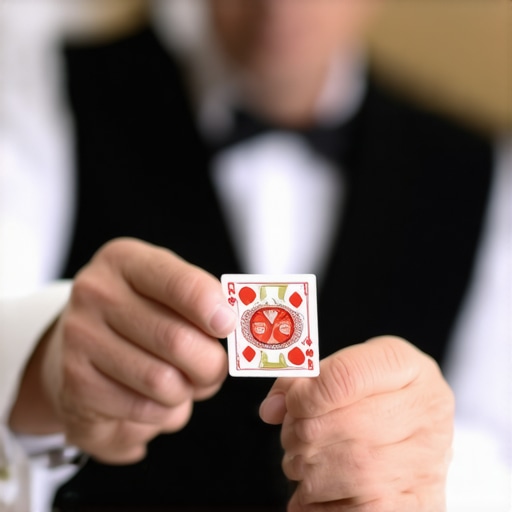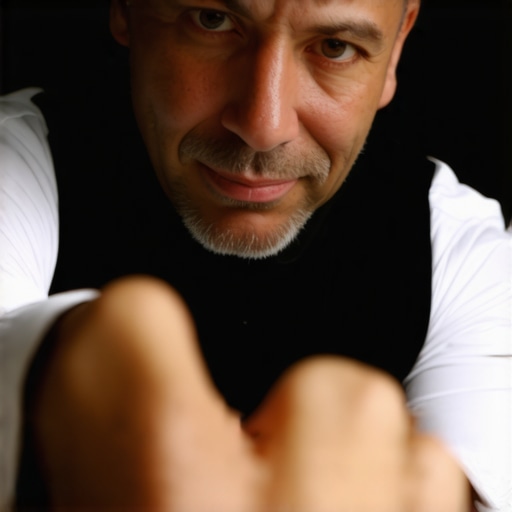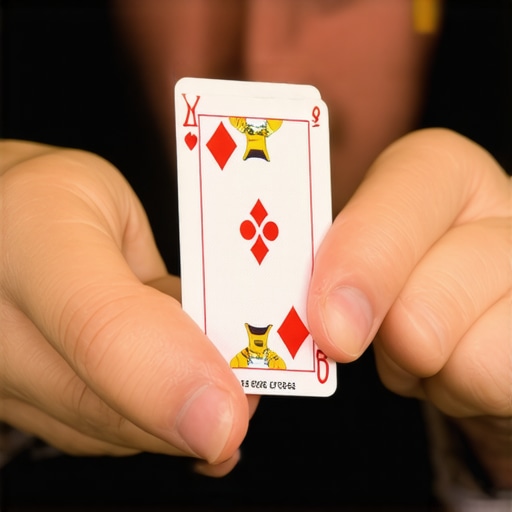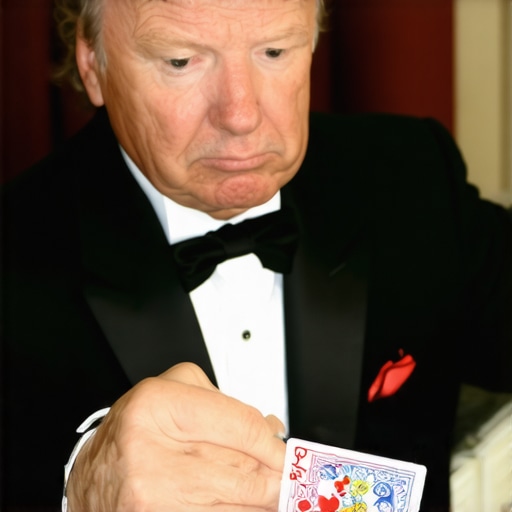My Journey into the World of Close-Up Magic and Trust Building
Ever since I first saw a magician perform a seemingly impossible card trick at a local event, I was captivated. The way close-up magic creates an intimate connection instantly drew me in. Over the years, I’ve learned that the secret isn’t just in the sleight of hand but in how it builds trust and engagement with the audience. I still remember my first attempt at performing magic at a friend’s party; despite my nervousness, I realized that genuine interaction made all the difference.
The Power of Personal Connection in Magic
When I started exploring effective close-up magic techniques, I discovered that the key to building trust lies in personal engagement. Techniques like mastering sleight of hand for impactful close-up magic help create illusions that feel real. But what truly elevates the experience is the magician’s ability to connect with the audience on a personal level. Making eye contact, reading their reactions, and adapting your performance foster a sense of trust that’s essential for memorable magic.
How Do Sleight of Hand Techniques Enhance Audience Trust?
Sleight of hand is often viewed as just technical skill, but in reality, it’s a tool for building credibility. When I practice trusted close-up magic tips, I focus on smoothness and confidence. The more effortless I appear, the more my audience believes in what I’m doing. This creates a bond of trust, making the magic seem more genuine. For example, I often use quick, clean moves that seem impossible to follow, reinforcing my credibility and engaging my audience emotionally.
What Are the Psychological Secrets Behind Building Trust Quickly?
Deep down, I’ve realized that confidence and storytelling are vital. Sharing a brief story or a personal anecdote before performing a trick can set the stage and establish rapport. According to expert insights, quick trust-building relies on establishing credibility swiftly. I’ve also found that maintaining a genuine smile and relaxed demeanor helps ease any skepticism, making my tricks more impactful and memorable.
Why Does Authenticity Matter So Much in Close-Up Magic?
Authenticity is everything. When I perform, I aim to be genuine, showing enthusiasm and respect for my audience. This openness invites them to participate fully, which enhances the overall experience. It’s not just about the trick but about creating a shared moment of wonder. Trust is fragile, but when nurtured with sincerity, it transforms a simple illusion into a memorable experience that leaves a lasting impression.
If you’re interested in elevating your magic skills, I recommend exploring more about mastering sleight of hand for quick, trustworthy magic and how to integrate it into your performances.
Feel free to share your own experiences or ask questions below—building trust through magic is an ongoing journey, and I’d love to hear your stories!
Unlocking the Psychological Power of Misdirection and Timing
As an experienced magician, I’ve learned that beyond sleight of hand, mastering misdirection and timing is crucial for building trust quickly and maintaining audience engagement. The subtle art of directing attention ensures that your audience perceives your actions as natural, thus strengthening their belief in the illusion. This requires not only technical skill but also an intuitive understanding of human psychology, which can be honed through deliberate practice and observation.
How Can Strategic Misdirection Elevate Your Credibility?
Strategic misdirection isn’t about deception; it’s about guiding the audience’s focus seamlessly so that they see what you want them to see. When I perform, I employ body language, eye contact, and verbal cues to steer attention away from the secret moves. Effective misdirection can turn a simple sleight into a moment of genuine astonishment, reinforcing trust because the audience feels involved rather than manipulated. For more detailed insights on integrating misdirection into your routines, explore impactful close-up magic techniques.
The Role of Timing and Pacing in Building Audience Confidence
Timing is everything. Knowing precisely when to execute a move or reveal a trick can make the difference between skepticism and awe. A well-paced performance allows your audience to absorb each moment, creating a sense of narrative and anticipation. I often experiment with pauses and rhythm variations, observing how they influence audience perception. When the timing aligns perfectly, it fosters a sense of professionalism and reliability, key elements in trust-building. To refine your timing skills, consider reviewing fast magicians’ strategies for quick yet effective routines.

Can Your Performance Adapt to Different Audience Dynamics?
Every audience is unique, and an expert magician adapts accordingly. Recognizing cues—such as body language or facial expressions—enables you to tailor your approach, increasing relatability and trust. For example, a nervous or distracted audience might require a more interactive or humorous approach to break the ice. Conversely, an attentive crowd appreciates subtlety and finesse. Cultivating this adaptability is a hallmark of mastery. For more on customizing your magic, visit interactive magic show strategies.
What Are the Ethical Considerations in Building Trust Through Magic?
While the goal is to amaze, maintaining ethical standards is paramount. Respectful engagement, honesty about your skills, and ensuring your tricks are appropriate for the audience foster genuine trust. Misleading without integrity can harm your reputation and diminish the impact of your magic. By emphasizing sincerity and shared wonder, you create memorable experiences that resonate beyond the performance. For insights on ethical magic practices, consult trustworthy magic techniques.
Beyond Technique: The Psychological Underpinnings of Trust in Magic
As I continue to refine my craft, I’ve come to realize that the most compelling moments in close-up magic aren’t just about executing sleight of hand flawlessly—they hinge on understanding the human mind. The subtle art of psychology—how we perceive attention, trust, and expectation—plays a pivotal role. When I perform, I often think about Daniel Kahneman’s insights from “Thinking, Fast and Slow”, which highlight how our intuitive mind can be easily misled by carefully crafted cues. This knowledge helps me craft routines that tap into subconscious perceptions, making the magic feel not just impressive but genuinely believable.
How Do You Cultivate Authenticity While Maintaining a High Level of Skill?
One of the trickiest balances I’ve learned to strike is between appearing effortless and executing complex moves flawlessly. Authenticity isn’t just about being genuine; it’s about convincingly portraying confidence. I remember a time when I was nervous about a performance at a corporate event. Instead of overthinking my moves, I focused on engaging with my audience, sharing a quick personal story that linked to the trick. This shift in focus from perfection to connection created a more authentic experience. Over time, I realized that audiences pick up on sincerity—if you’re genuinely enjoying the moment and respecting their curiosity, trust flows naturally. To deepen this authenticity, I often practice in front of a mirror or record my routines, scrutinizing not just my technique but my expressions and body language, ensuring they align with my message of trust and wonder. For more advanced insights, explore mastering sleight of hand for impactful close-up magic.
Can Mastering Timing Transform Your Audience’s Perception of Your Credibility?
Absolutely. Timing is often the difference between a good magician and a great one. I’ve found that deliberate pauses—pauses that seem natural—give the audience space to absorb each moment before moving on. These pauses also serve as psychological anchors, making the reveal or the misdirection more impactful. I recall a routine where I paused just before the final reveal, watching as the audience’s anticipation built. The tension in the room heightened their engagement, and the moment of astonishment felt even more profound. This is supported by cognitive research suggesting that well-timed pauses increase emotional impact and trust, as they create a sense of rhythm and control. To hone this skill, I often practice routines slowly, experimenting with different timing patterns to see which elicit the strongest reactions. For detailed strategies, check out fast magicians’ strategies for timing and pacing.
Visual cues such as eye contact and body language are powerful tools that reinforce your timing and misdirection. When I perform, I pay close attention to the audience’s reactions—sometimes a slight lean forward or a raised eyebrow tells me I need to slow down or emphasize a point more. These real-time adjustments build a rapport that feels natural, making the magic seem like a shared secret rather than a scripted trick. The more I observe and adapt, the more my audience perceives me as trustworthy and in control. Developing this sensitivity has been an ongoing journey, one that requires active observation and genuine engagement. For comprehensive approaches to adapting your performance, visit interactive magic show strategies.
What Are the Ethical Boundaries in Using Psychological Techniques to Build Trust?
In my experience, maintaining ethical integrity is crucial. While I aim to deepen the illusion and trust, I never want to manipulate or deceive in ways that feel dishonest. Instead, I see these techniques—like misdirection, timing, and storytelling—as tools for enhancing shared wonder. Respecting the audience’s intelligence and emotional well-being means being transparent about the fact that it’s all about creating a shared experience. When I openly acknowledge that I’m employing psychological principles like attention management and expectation setting, it fosters a sense of mutual respect. This approach aligns with ethical standards in magic, emphasizing the importance of trust built on sincerity. For more on ethical practices, explore trustworthy magic techniques.
The Subtle Art of Psychological Precision in Trust Building
Beyond mastering sleight of hand and timing, I’ve come to realize that understanding the nuances of human psychology is pivotal in elevating trust during close-up magic. Techniques such as leveraging the principle of social trust dynamics enable a magician to craft routines that resonate on a subconscious level. By subtly aligning my gestures, speech patterns, and pacing with innate psychological cues, I foster a sense of familiarity and reliability that engenders deeper engagement. For example, mirroring audience reactions or using calibrated verbal affirmations can unconsciously reinforce rapport, making the magic appear more authentic and trustworthy.
How Can You Harness Cognitive Biases to Strengthen Audience Confidence?
Harnessing cognitive biases is a sophisticated layer of performance that transforms mere skill into an art of influence. I often employ the confirmation bias by subtly guiding audience expectations, then delivering a reveal that confirms their predictions, thus reinforcing their trust. Additionally, leveraging the primacy and recency effects ensures that the most impactful moments—such as the climax or key reveal—are remembered vividly, cementing the illusion’s credibility. Integrating these biases requires deliberate routine design, where every gesture and narrative cue is calibrated for maximum psychological impact.
What Are the Risks of Overusing Psychological Techniques in Magic?
While these techniques can significantly elevate your craft, overapplication risks diminishing authenticity. If the audience perceives manipulation rather than shared wonder, trust can erode rapidly. I’ve learned that transparency about employing psychological principles, when done subtly, maintains the integrity of the experience. Being mindful not to cross into coercive territory—by respecting audience autonomy and avoiding undue influence—preserves the magic’s ethical foundation. For those eager to explore this balance, I recommend deepening your understanding through authoritative sources like psychological influence articles and integrating insights responsibly into your routines.
The Role of Emotional Intelligence in Deepening Audience Trust
Developing emotional intelligence (EQ) has profoundly impacted my ability to connect authentically. Recognizing subtle emotional cues—such as microexpressions or tonal shifts—allows me to adapt my performance in real-time, creating a shared emotional journey. By demonstrating genuine enthusiasm and empathetic engagement, I foster a sense of camaraderie that transcends mere spectacle. This emotional attunement turns a routine trick into a memorable experience rooted in mutual trust. Techniques like active listening and reflective phrasing can deepen this connection, transforming your role from mere performer to trusted confidant. To hone these skills, I suggest studying resources like Daniel Goleman’s work on emotional intelligence and practicing mindful observation during performances.
How Can Advanced Routine Structuring Amplify Trust and Engagement?
Routine structuring at an advanced level involves weaving psychological cues, storytelling, and strategic pauses into a cohesive narrative. I meticulously design each segment to build anticipation, then deliver impactful revelations that feel inevitable yet astonishing. The use of layered misdirection—where the audience’s focus is guided subtly across multiple points—creates a seamless flow that maintains credibility. Incorporating elements like personal anecdotes or thematic motifs further personalizes the experience, fostering a bond of authenticity. For detailed insights into creating such routines, explore advanced routine design tailored for high-stakes environments.
< >
>
Visual cues such as eye contact and body language are powerful tools that reinforce your timing and misdirection. When I perform, I pay close attention to the audience’s reactions—sometimes a slight lean forward or a raised eyebrow tells me I need to slow down or emphasize a point more. These real-time adjustments build a rapport that feels natural, making the magic seem like a shared secret rather than a scripted trick. The more I observe and adapt, the more my audience perceives me as trustworthy and in control. Developing this sensitivity has been an ongoing journey, one that requires active observation and genuine engagement. For comprehensive approaches to adapting your performance, visit interactive magic show strategies.
Things I Wish I Knew Earlier (or You Might Find Surprising)
The Hidden Power of Authenticity
Looking back, I realize that authenticity is the secret ingredient that often makes or breaks a magic performance. Early in my journey, I focused heavily on perfecting my sleight of hand, but it was only when I embraced being genuine and enthusiastic that my audience truly connected. Sharing honest reactions and showing my real passion created a trust that no polished trick alone could achieve.
Timing Is More Than Just Precision
At first, I thought timing was about executing moves precisely. Over time, I learned that the real magic lies in the rhythm and pauses. A well-timed pause before a reveal can heighten suspense and deepen trust. Practicing routines slowly and experimenting with pacing transformed my performances into captivating narratives rather than mere tricks.
Misdirection as a Psychological Tool
I used to see misdirection solely as a sleight-of-hand technique, but now I see it as a way to guide the audience’s subconscious attention. By understanding where people naturally look or listen, I craft routines that feel seamless and authentic. This psychological approach makes the magic more believable and strengthens the bond of trust.
Adapting to Different Audiences
One of the biggest surprises was how crucial adaptability is. Every crowd is different—some respond well to humor, others to subtlety. Paying attention to body language and reactions allows me to tailor my performance on the fly. This flexibility fosters a genuine connection and builds trust more effectively than a one-size-fits-all routine.
The Ethical Side of Trust Building
I’ve come to appreciate that maintaining integrity is essential. Using psychological techniques responsibly—not to manipulate but to enhance shared wonder—keeps the magic ethical and memorable. Respecting the audience’s intelligence and emotions creates a foundation of trust that endures beyond the performance.
Resources I’ve Come to Trust Over Time
- Daniel Goleman’s “Emotional Intelligence”—This book deepened my understanding of how emotional awareness can enhance my connection with the audience. It’s a must-read for anyone wanting to perform with heart and authenticity.
- Psychology Today articles on cognitive biases—These articles helped me understand how biases like confirmation bias can be subtly harnessed in routines to reinforce trust. I recommend them for their practical insights.
- “Thinking, Fast and Slow” by Daniel Kahneman—This classic introduced me to the subconscious mind’s role in perception. Applying Kahneman’s principles has made my routines more psychologically compelling.
Parting Thoughts from My Perspective
Trust is the cornerstone of impactful close-up magic. While mastering sleight of hand and timing are vital, I believe that genuine authenticity and a deep understanding of human psychology elevate your craft from impressive to unforgettable. Remember, every audience is unique, and adapting with sincerity creates bonds that turn fleeting illusions into lasting memories. If this resonated with you, I’d love to hear your thoughts—feel free to share your experiences or ask questions below. Keep practicing, stay genuine, and enjoy the magic you create!


